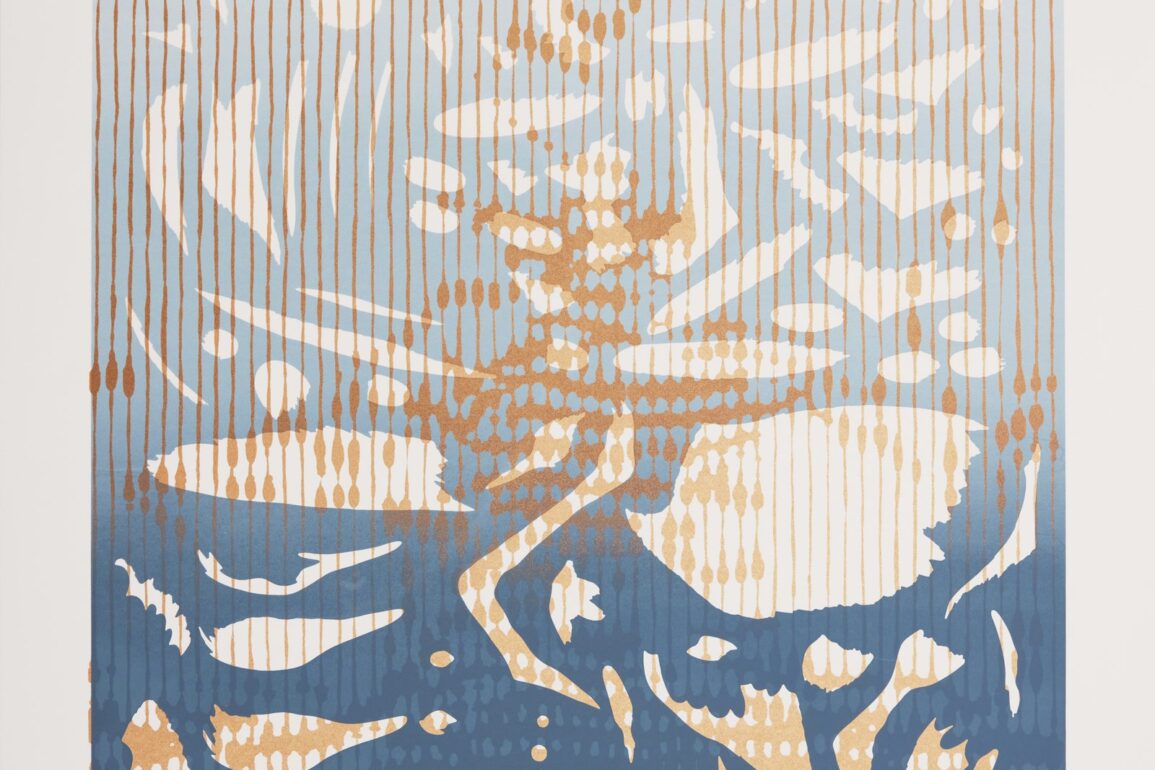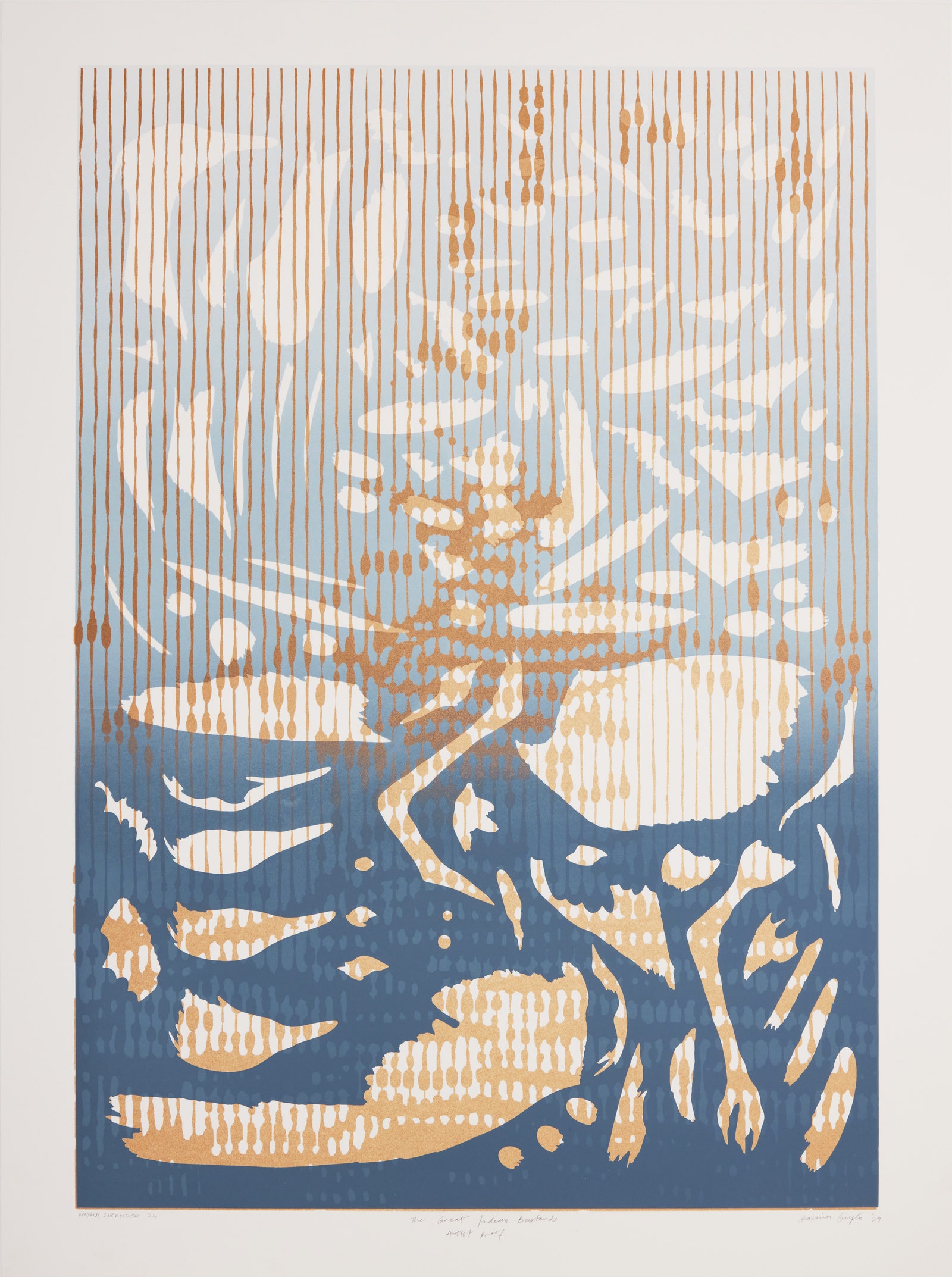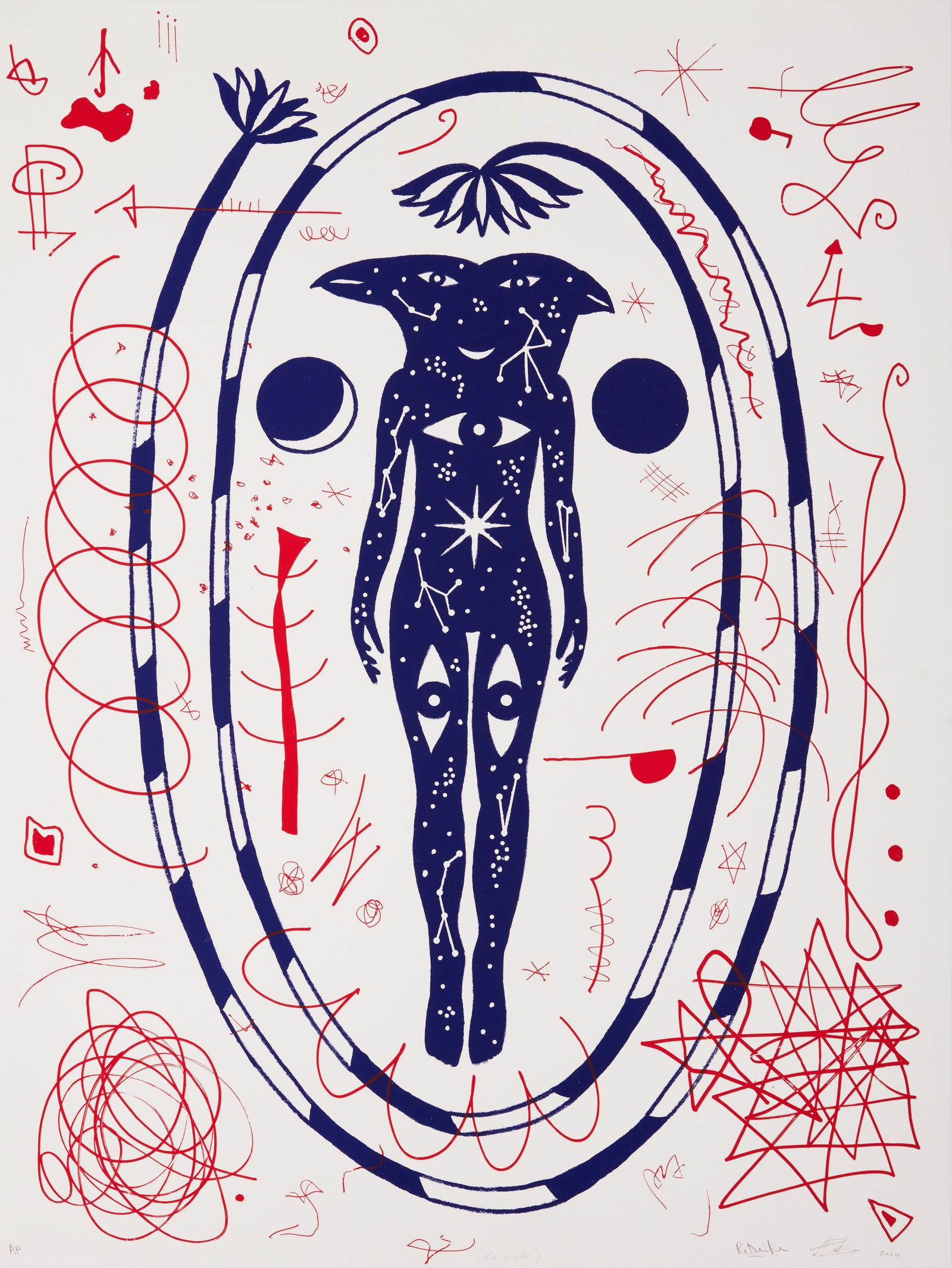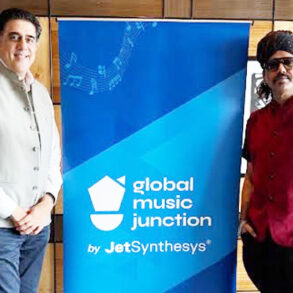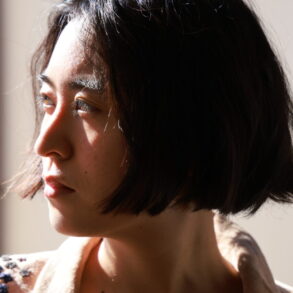For artists Parag Tandel (who sculpts personal narratives of the Koli community) and Savia Mahajan (whose ceramics build on the themes of resurgence and materiality), their collaboration felt “very multidimensional, as we were conversing through an online portal,” recalls Tandel, adding, “We are both plastic art practitioners, and it is always a ritual in sculpture and ceramics to realistically plan things before starting. We stuck to this clear process because Savia was in Hampi Art Labs and I had to improvise my drawings on the spot.” For their print, the duo agreed on using bright metallic and pop colours, which began with Mahajan responding to a drawing of mangroves Tandel shared via email. She recalls visiting ancient temple sites at Hampi, and “adding the iconographies I had been observing during my travels in Karnataka. We love our print, especially since we don’t look at colours when starting an artwork as sculptors—and decided to have fun with this new medium.”
Garima Gupta and Nibha Sikander have very different working styles as artists, but shared a common interest—birds. “For a long time, I’ve wanted to do something about the diminishing number of the great Indian bustard—once destined to be our national bird—and Nibha agreed we could try to bring this interest to a new medium and see what comes up. I struggled a bit because my work in pencil doesn’t fit well with screen printing’s requirements; and tried something new—a more graphic look with bold lines that trace the wave of a bustard’s call,” says Gupta. “I cut out a negative stencil using abstract body parts of the bustard, with a light-to-dark gradient, which was juxtaposed against Garima’s print depicting the frequency of the bird’s call,” adds Sikander.
A year ago, TARQ moved from its space within the verdant complex of Dhanraj Mahal in Colaba to a new more contemporary-styled gallery with cleaner lines, taller ceilings and starker interiors housed in the century-old Navsari Chambers at Fort. “It’s been the best decision I’ve made so far. I think the new space has allowed us to expand what we show, and also works much better for us operationally,” muses Kapadia. She looks back at her decade-long journey, proud of the fact that the gallery has become “exactly the space we wanted it to be! We’ve welcomed in artists who’ve gone from being a young collector’s first buy, to now creat artworks that hang in homes alongside works by other renowned artists.”
Read more: Jerry Pinto remembers the history of art in Mumbai as Chemould celebrates 60 years
Read more: Shakuntala Kulkarni’s Armours for Brides dazzles at Dior’s Autumn/Winter show
Read more: Delhi’s experimental gallery Nature Morte comes to Mumbai with Subodh Gupta’s solo
This post was originally published on this site be sure to check out more of their content



